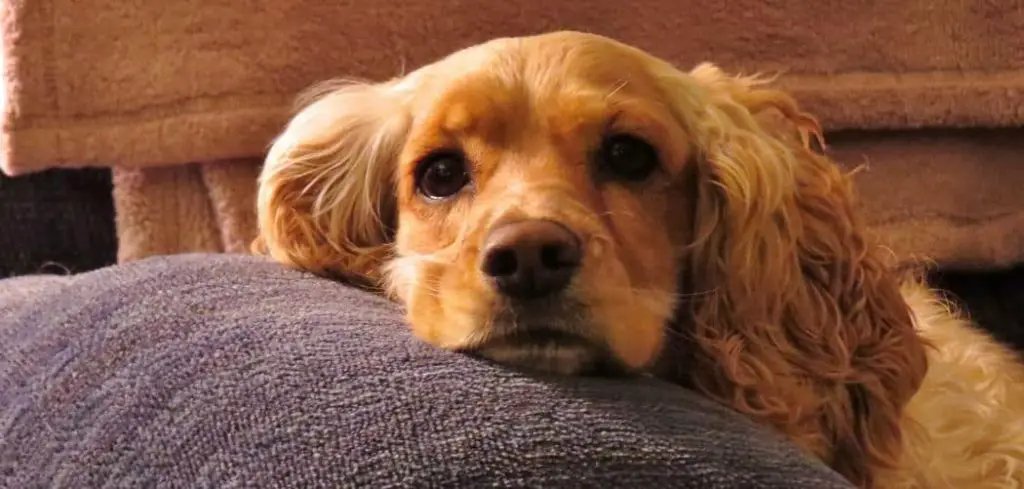Observing a dog panting and pacing after surgery can be worrying. These behaviors may signal normal post-operative recovery, but they can also indicate pain or complications.
We outline the common causes of panting and pacing after surgery in dogs, what you can do at home, and when to seek veterinary help.
Dog Panting and Pacing After Surgery — Why It Happens
Panting and pacing after surgery are common in dogs and often result from the aftereffects of anesthesia, pain, or anxiety. Anesthesia can temporarily affect a dog’s body temperature regulation, making them pant as they recover.
Pain or discomfort at the incision site can also cause restlessness, as your dog may struggle to find a comfortable position.
In some cases, panting and pacing stem from stress, especially if your dog is wearing a cone or feels disoriented in an unfamiliar environment.

Dog Panting and Pacing After Surgery: Common Causes
Post-Surgical Pain
Pain is one of the most common reasons dogs pant and pace after surgery. Even minor procedures can cause discomfort, leading dogs to seek relief or distraction by moving around. Panting often accompanies pain as a stress response and to help regulate body temperature.
Signs include restlessness, whining, reluctance to lie down, or licking at the surgical site.
Managing pain with prescribed medications and monitoring your dog closely is crucial to avoid complications and promote healing.
Read more: Dog Panting and Crying After Surgery (Tips for a smooth recovery)
Anxiety and Stress
Surgery can trigger anxiety in dogs, especially if they are recovering in an unfamiliar environment.
Panting and pacing are classic stress behaviors as dogs attempt to cope with changes in routine, presence of strangers, or discomfort from confinement.
Other signs include trembling, whining, drooling, or trying to escape from kennels. Maintaining a calm environment, using gentle reassurance, and providing familiar bedding or toys can help reduce stress.
Medication Side Effects
Certain post-operative medications, including painkillers, anti-inflammatories, or anesthesia remnants, can cause panting and restlessness.
Some dogs are sensitive to these drugs, experiencing increased heart rate, agitation, or mild nausea.
You may notice increased pacing, drooling, or mild vomiting. Reporting side effects to your veterinarian can allow adjustments to dosages or medications to keep your dog comfortable.
Disorientation from Anesthesia
Anesthesia can temporarily affect a dog’s coordination, cognition, and comfort levels. This may result in pacing, confusion, or excessive panting as the dog regains normal function.
Dogs recovering from anesthesia may also appear wobbly, stumble, or vocalize unusually. Providing a quiet, safe space and monitoring closely helps ensure they do not injure themselves during this vulnerable period.
Inflammation or Infection
Post-surgical inflammation or early infection can lead to panting and pacing as a dog responds to discomfort.
Swelling at the incision site, fever, or increased warmth can make a dog restless and unsettled.
Other signs may include redness, discharge, foul odor, or unusual licking at the surgical area. Prompt veterinary assessment is necessary to prevent complications and ensure proper healing.
Urinary or Gastrointestinal Discomfort
After surgery, some dogs may experience urinary or digestive issues that cause panting and pacing. Stress, restricted activity, or side effects from medications can lead to discomfort, prompting restlessness.
Signs include frequent urination, straining, diarrhea, vomiting, or signs of bloating. Ensuring proper hydration, diet, and timely veterinary evaluation supports recovery and reduces distress.
Read more: Dog lethargic not eating after surgery (Here’s why)
What to Do If Your Dog Is Panting and Pacing After Surgery
Create a calm, quiet recovery space to reduce stress and limit unnecessary stimulation. Ensure your dog has access to water and, if approved by your veterinarian, light food.
Monitor the surgical site for swelling, redness, or discharge, and prevent excessive licking or chewing by using an e-collar if necessary.
Follow the prescribed medication schedule carefully, including pain relief, to manage discomfort and prevent restlessness.
Provide gentle reassurance and short periods of supervised interaction, but avoid forcing activity or play until your dog is fully recovered.
Keep a log of your dog’s panting, pacing, appetite, urination, and bowel movements to provide your veterinarian with accurate recovery data.
When to Call or Visit Your Vet
Immediate veterinary attention is warranted if your dog displays:
Labored panting or difficulty breathing
Persistent pacing or agitation that does not improve with pain relief
Signs of infection at the surgical site, including redness, swelling, or discharge
Vomiting, diarrhea, or loss of appetite
Lethargy, collapse, or unusual disorientation
Early intervention can prevent complications, ensure proper healing, and maintain your dog’s comfort.
Read more: Mucus in Dog Poop After Surgery (Why it happens)
Key Takeaway
Panting and pacing after surgery can be a normal part of recovery but may also signal pain, anxiety, or complications.
Careful observation, a calm environment, adherence to veterinary instructions, and timely medical attention are essential for supporting your dog through the post-operative period.
